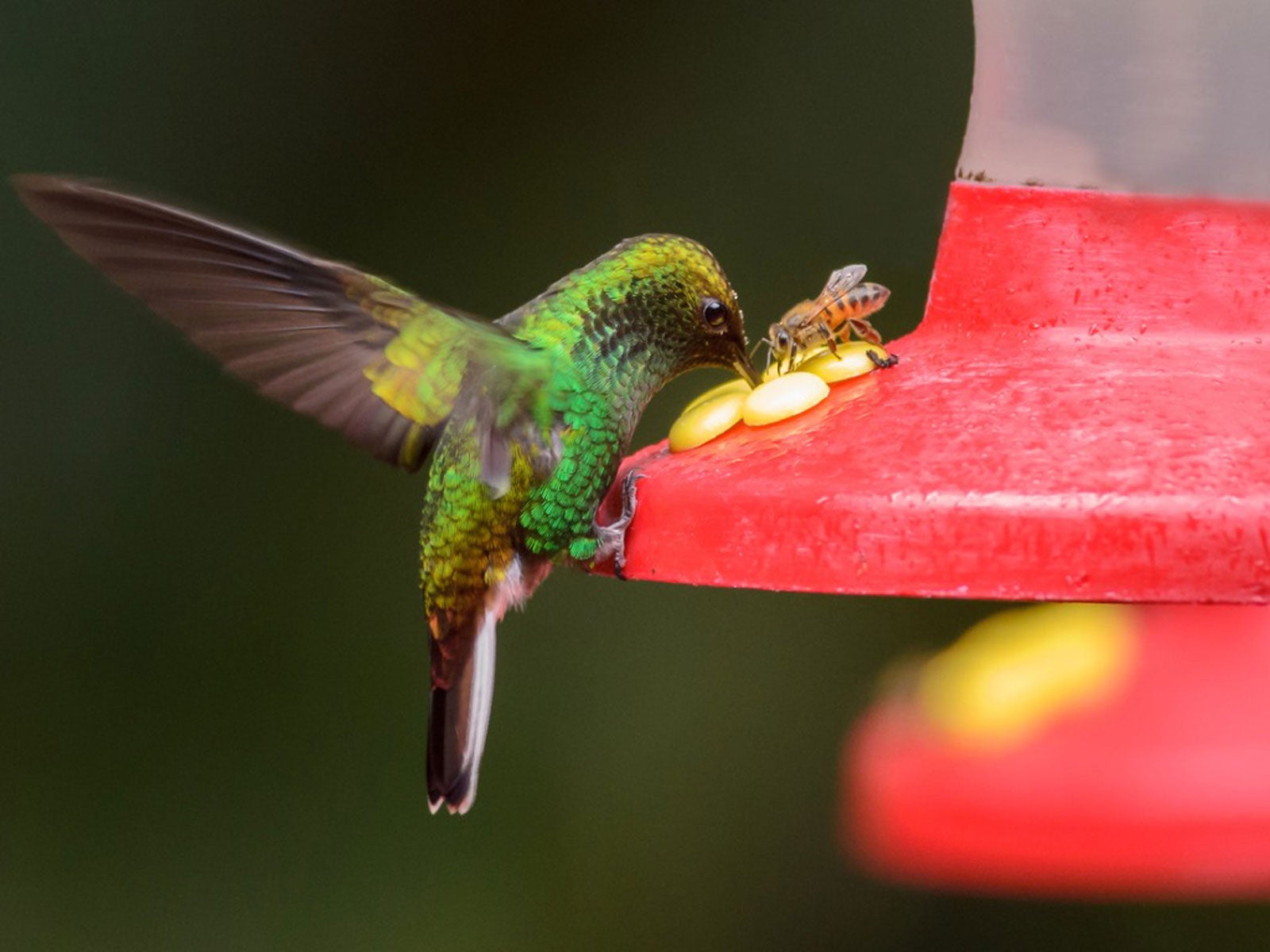Bees In Hummingbird Feeder – Why Do Wasps Like Hummingbird Feeders


Do wasps like hummingbird feeders? They love the sweet nectar, and so do bees. Bees and wasps at a hummingbird feeder may be uninvited guests but remember that both are important pollinators that play a necessary role in a healthy environment. The problem is that too many bees and wasps can compete with hummers and discourage them from visiting the feeder. They can also contaminate the nectar.
The good news is that there are simple ways of controlling bees in hummingbird feeders, although you may still have a few that stick around.
Keeping Bees from Hummingbird Feeders
Controlling hummingbird pests in feeders is sometimes necessary in order to prevent issues later. Bees and wasps at a hummingbird feeder is no different. Here are some tips for managing bees and wasps at your hummingbird feeder.
- Invest in a couple of “no-insect” feeders. These feeders are designed in various ways that allow hummingbirds to enjoy the nectar but don’t provide access to bees and wasps. For instance, saucers are positioned so the hummers can access the nectar, but bees and wasps can’t. Some come with no-insect features built in while others accommodate extra accessories that can be used to bolster hummingbird feeder bee control. Feeders with a flat shape also tend to discourage bees from visiting these hummingbird feeders.
- Color matters. Stick with traditional red feeders, as red is known to attract hummingbirds. Yellow, on the other hand, invites bees and wasps. Remove any yellow parts or paint them with non-toxic paint. Move the feeder every so often. Moving the feeder even a few feet won’t discourage hummers, but it will confuse bees and wasps.
- Be sure the nectar isn’t too sweet. Bees and wasps require high levels of sugar, but hummingbirds won’t mind if the nectar isn’t quite as sweet. Try a solution of five parts water to one-part sugar. Also, try using a bee feeder AWAY from your hummingbird area. Various types of bee feeders are used by beekeepers to encourage comb building, substitute for pollen when flowers and other resources are lacking, or to prepare the bees for winter. A super sweet mix of half water and half sugar will draw bees and wasps away from the hummingbird feeder.
- Peppermint oil repellent. Some bird lovers claim that peppermint extract doesn’t bother hummers but discourages bees and wasps. Dab the minty stuff on the feeding ports and where the bottle attaches to the feeder. Repeat the process after a rainfall. You can also try putting a peppermint plant near the feeder.
- Clean the feeder regularly. Give the feeder a good scrubbing every time you replace the nectar. The sweet fluid is bound to drip occasionally (especially if you’re overfilling the container). Replace leaky feeders. Keep your yard clean too, picking up sticky pop or beer cans and keep trash tightly covered.
- Place hummingbird feeders in the shade. Hummingbirds don’t mind shade, but bees and wasps prefer sunny areas. Shade will also keep the nectar fresher longer.
Gardening tips, videos, info and more delivered right to your inbox!
Sign up for the Gardening Know How newsletter today and receive a free copy of our e-book "How to Grow Delicious Tomatoes".

A Credentialed Garden Writer, Mary H. Dyer was with Gardening Know How in the very beginning, publishing articles as early as 2007.